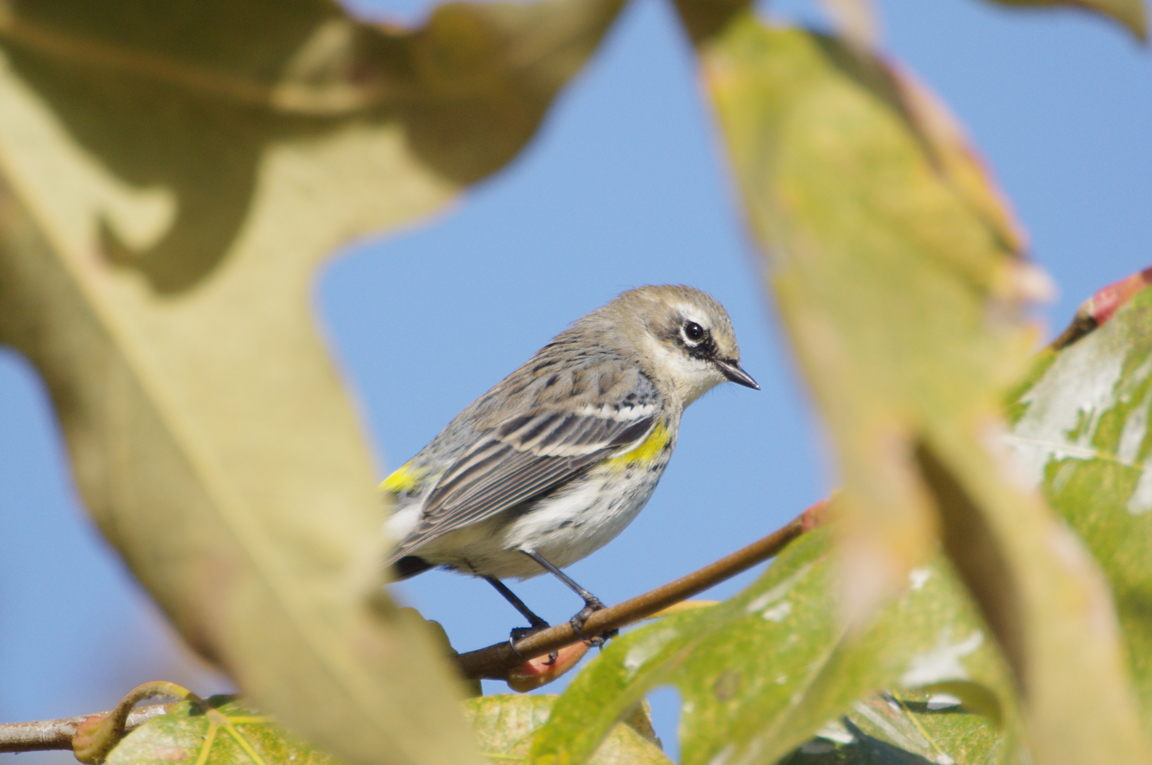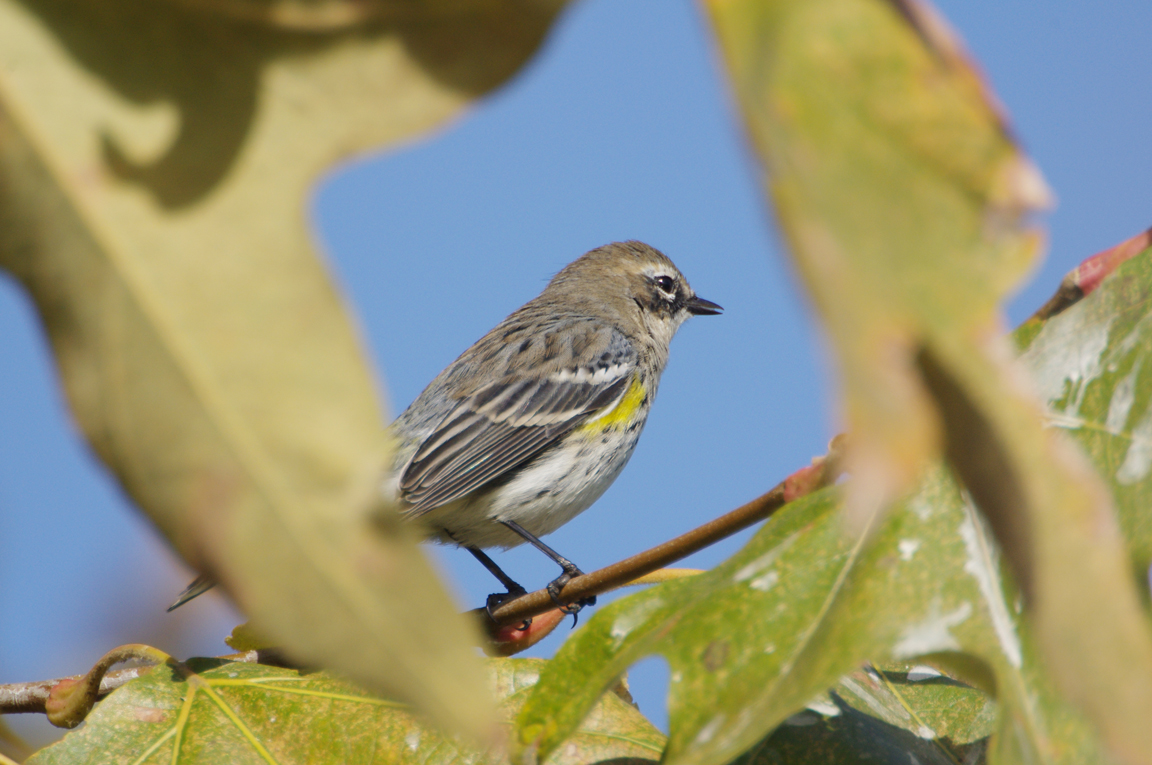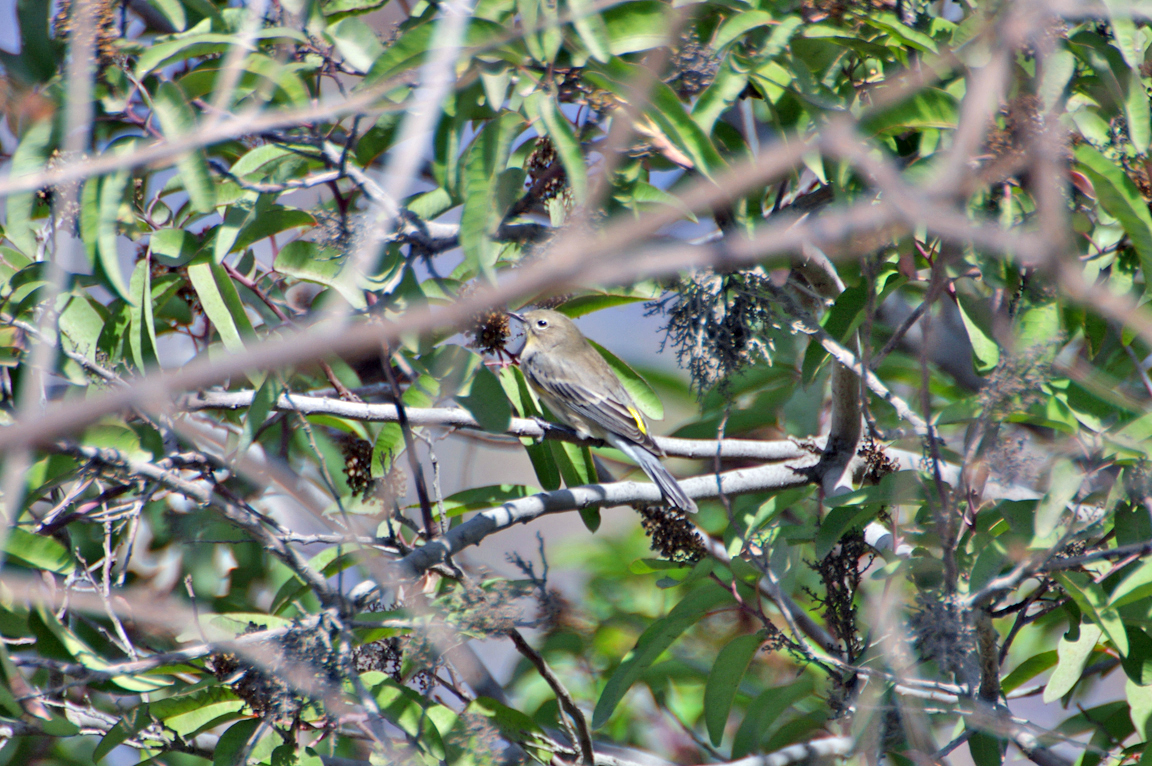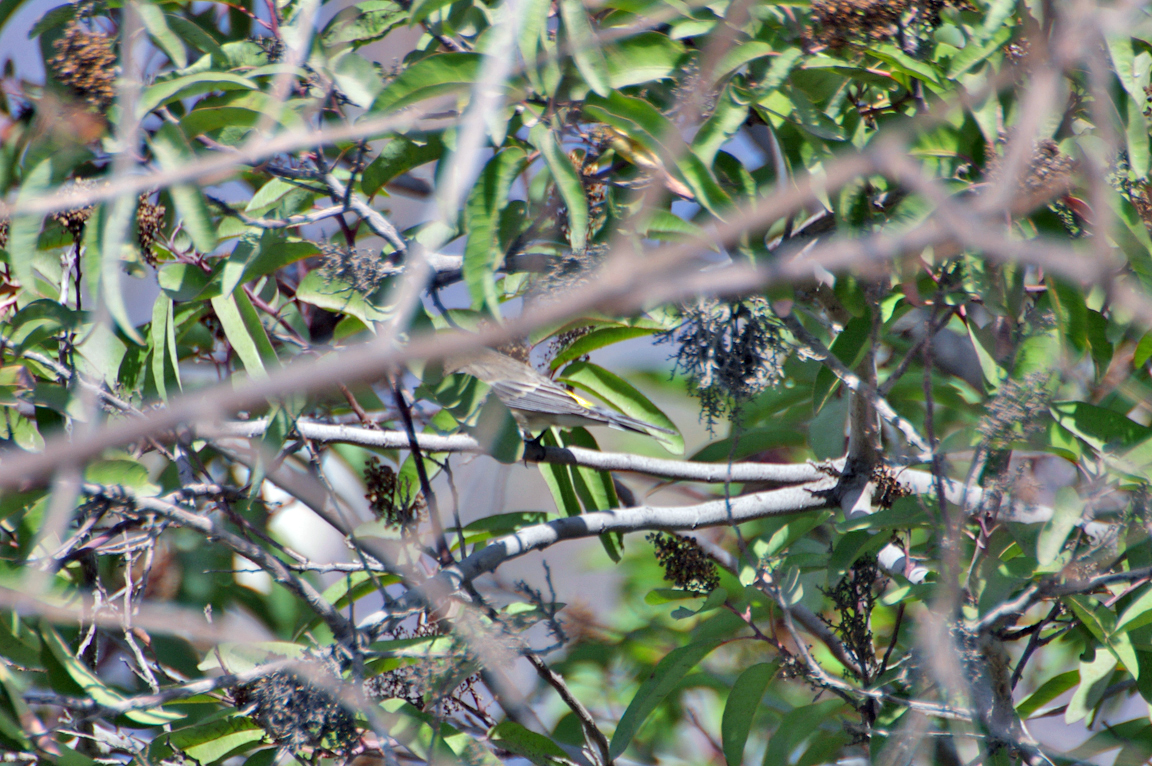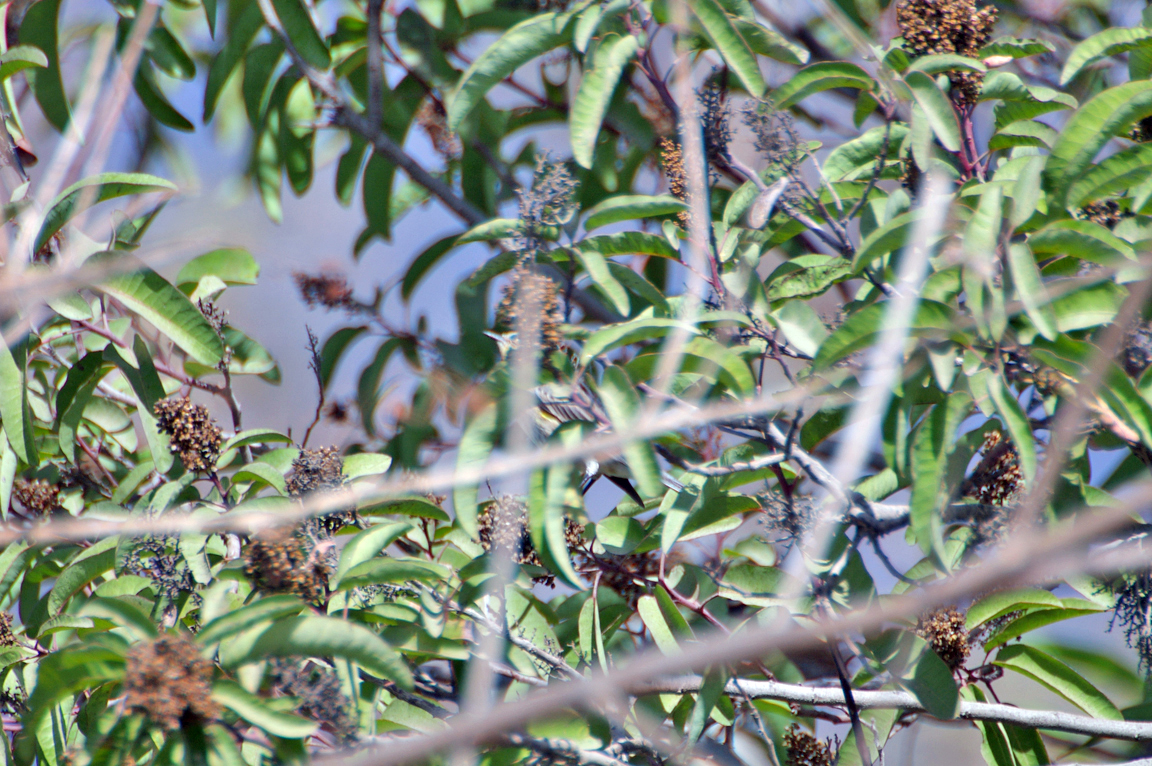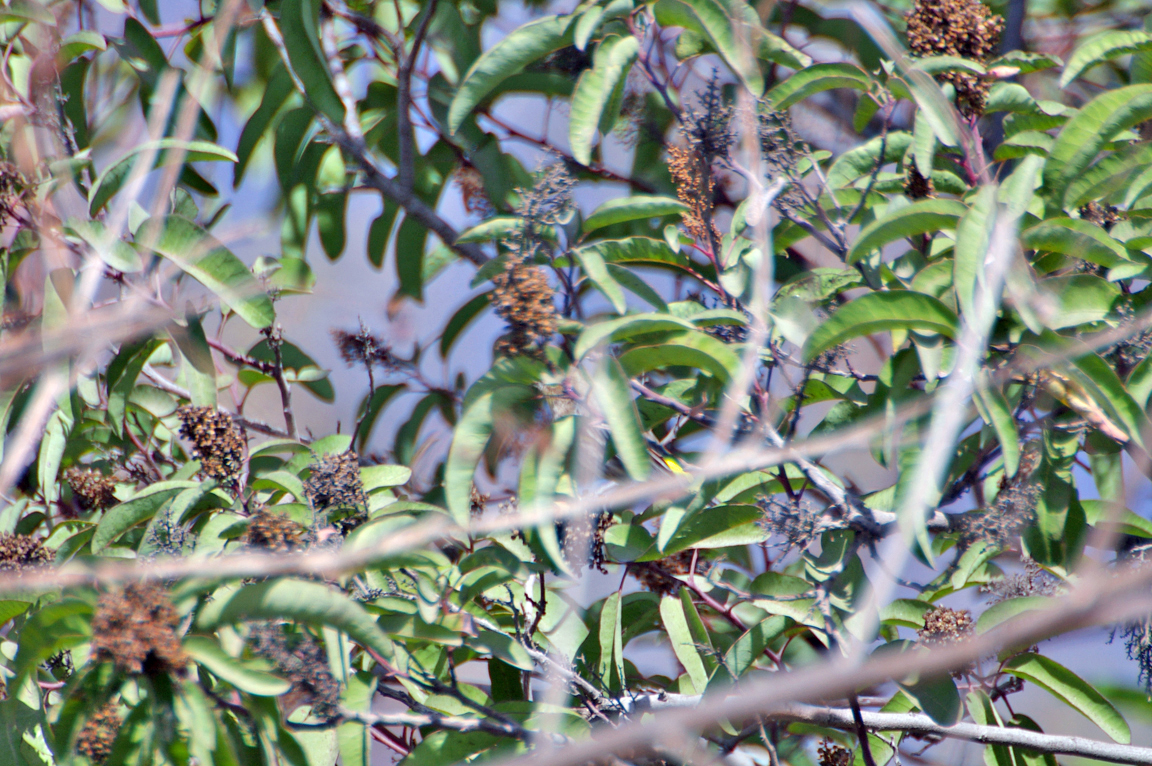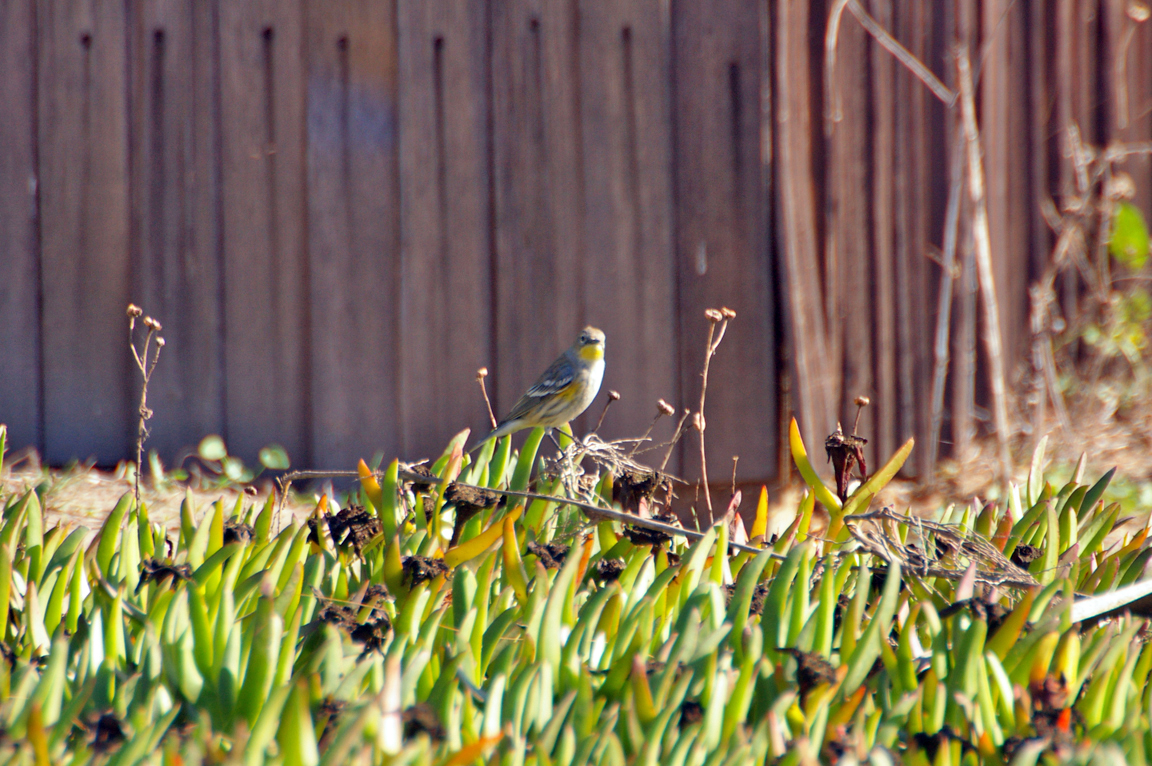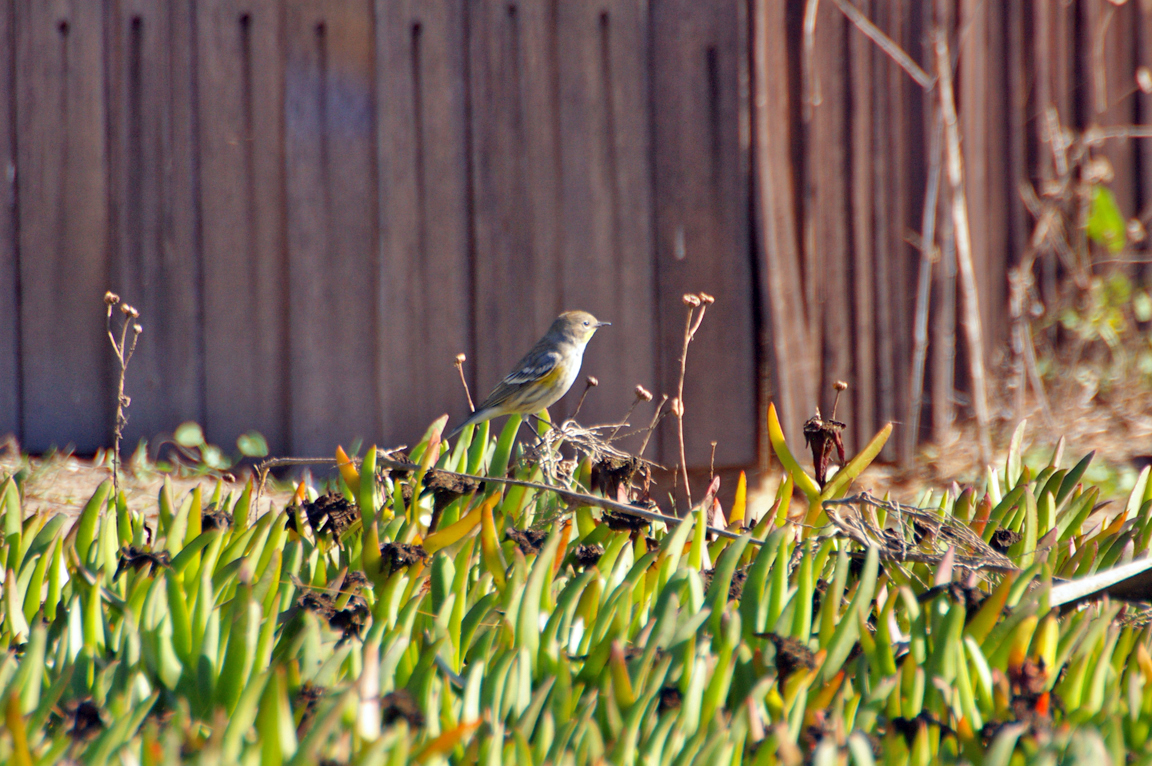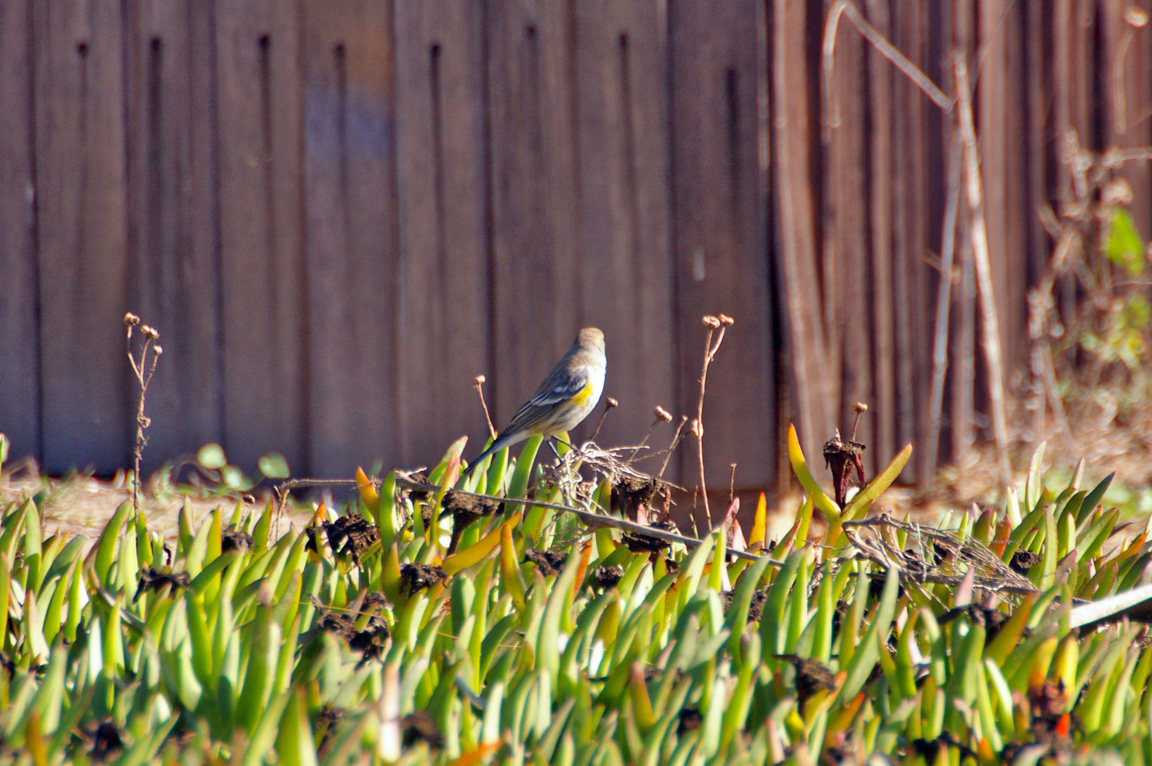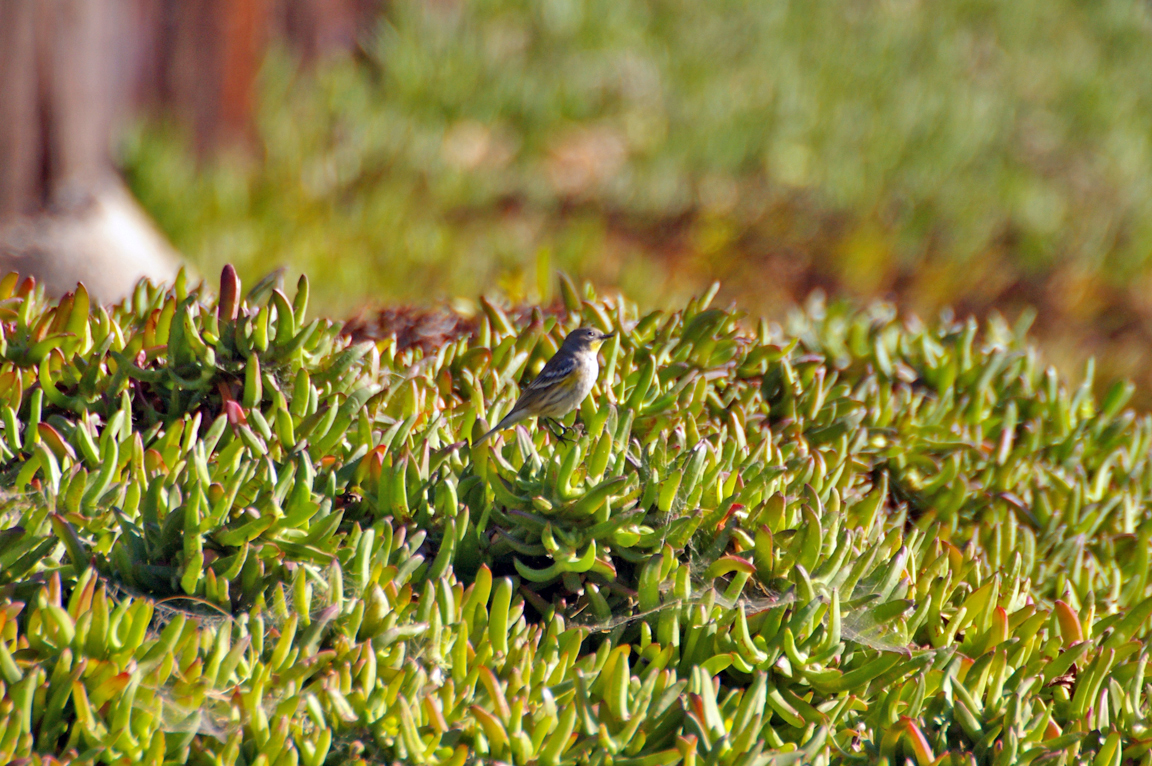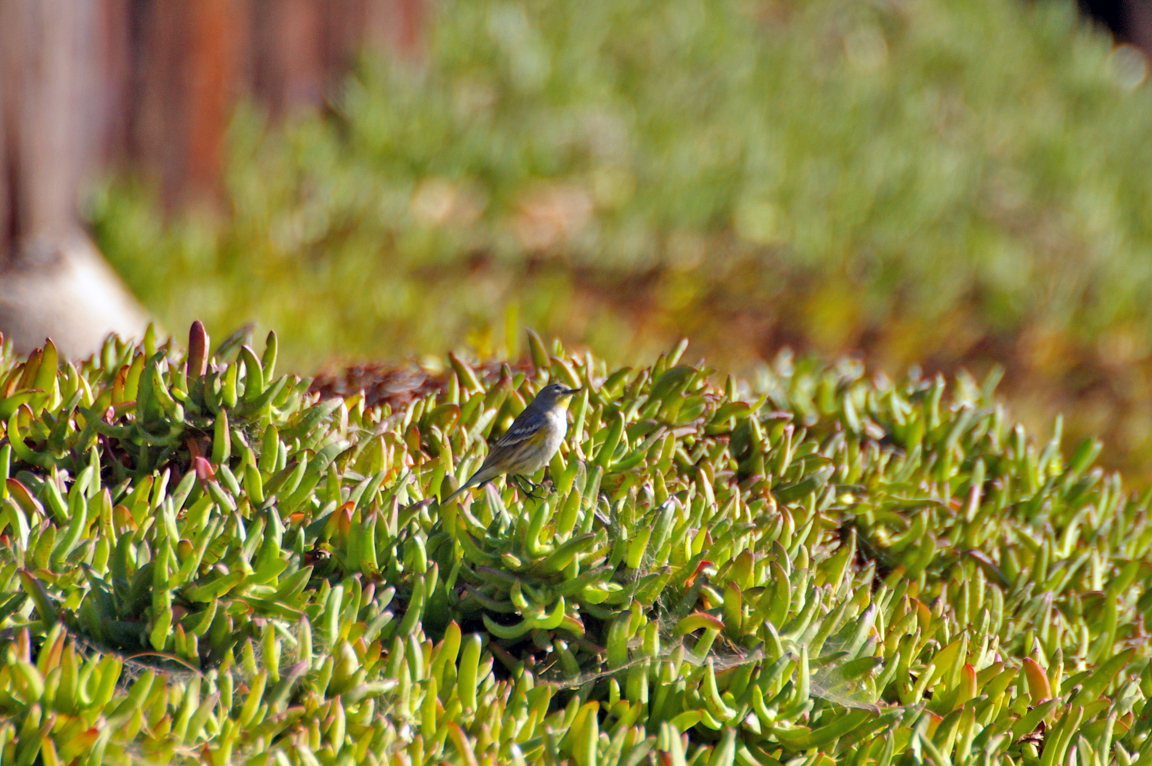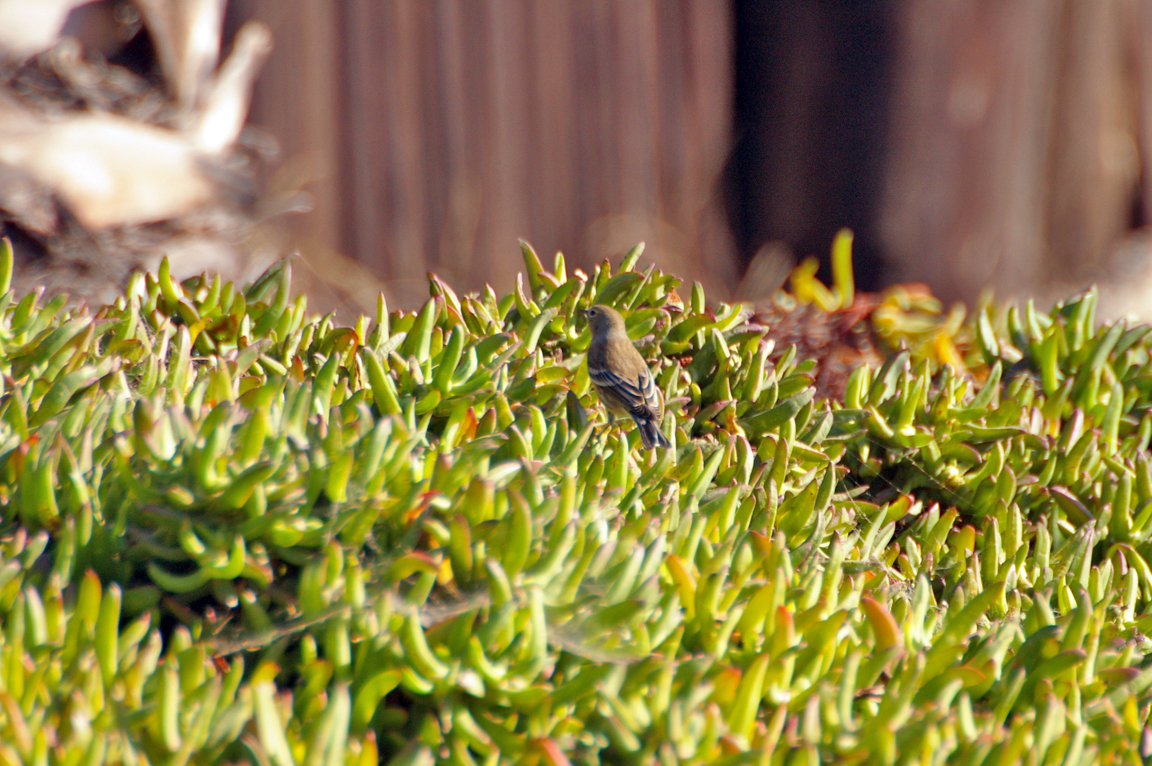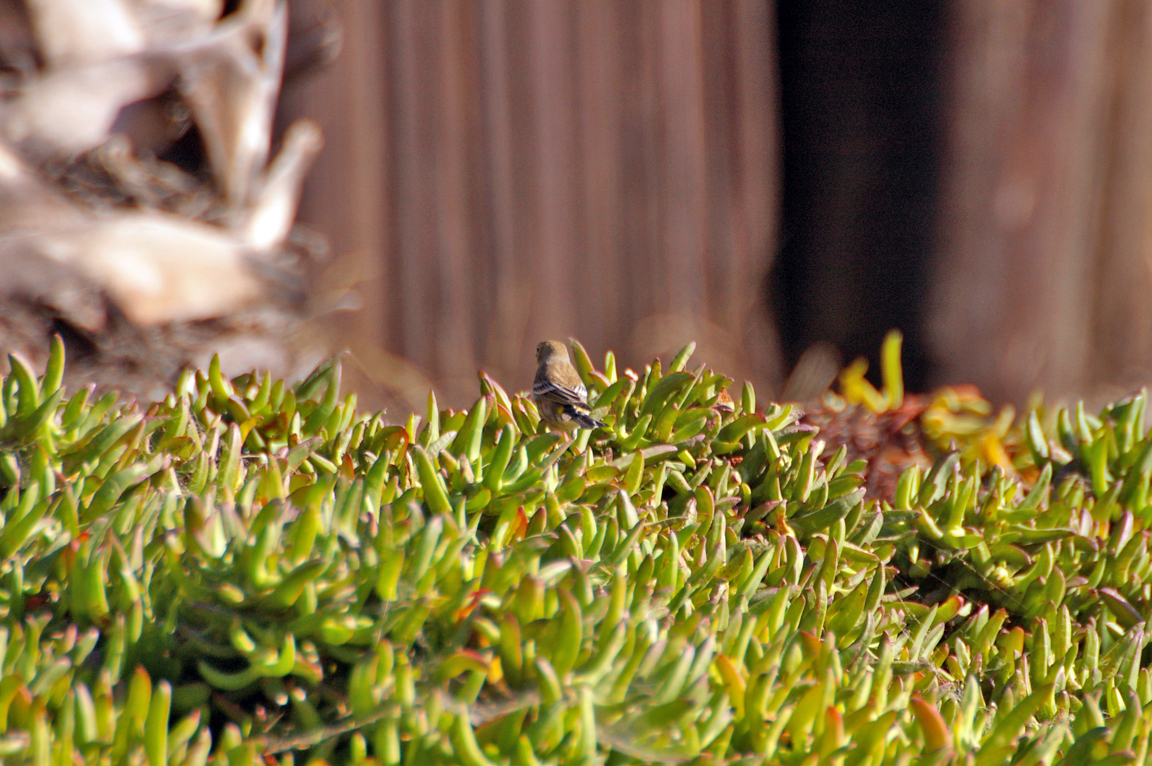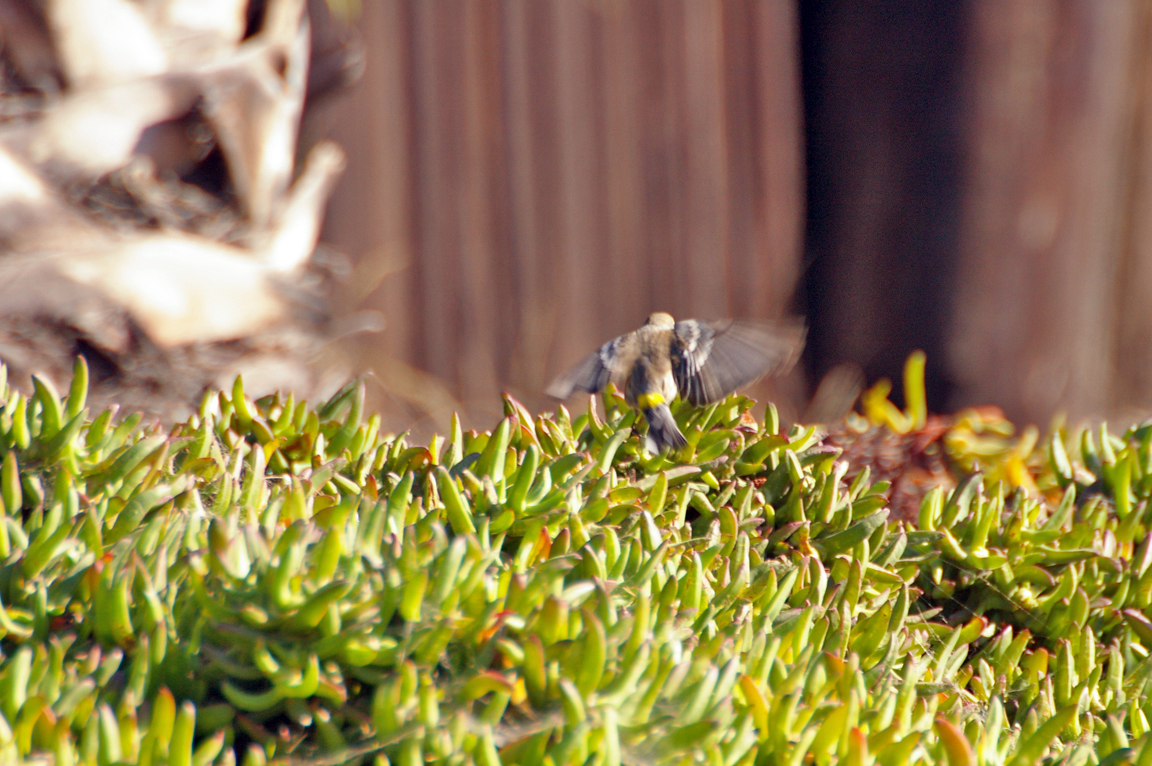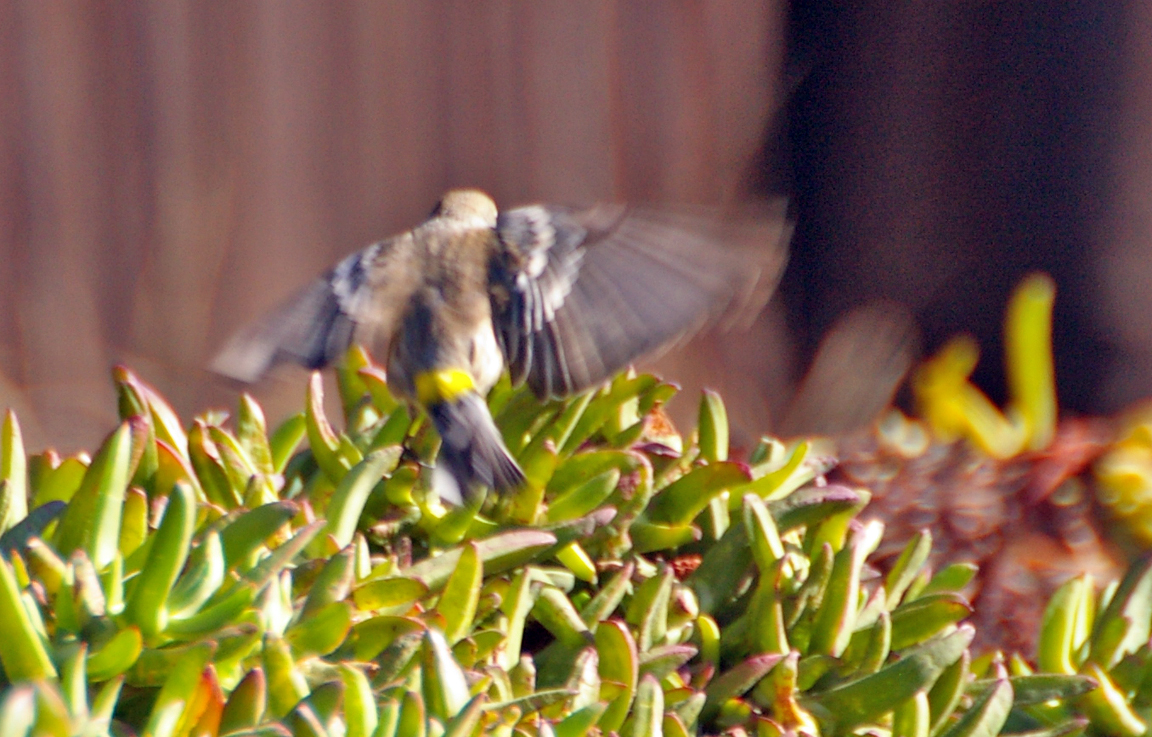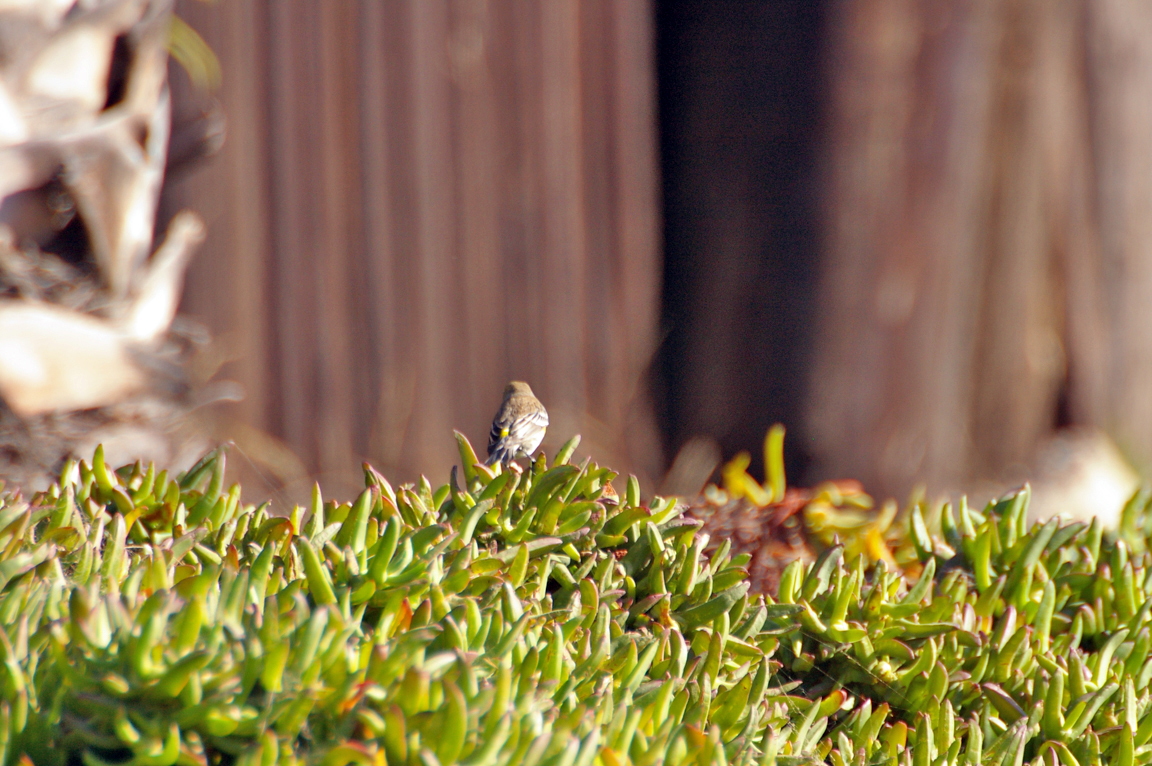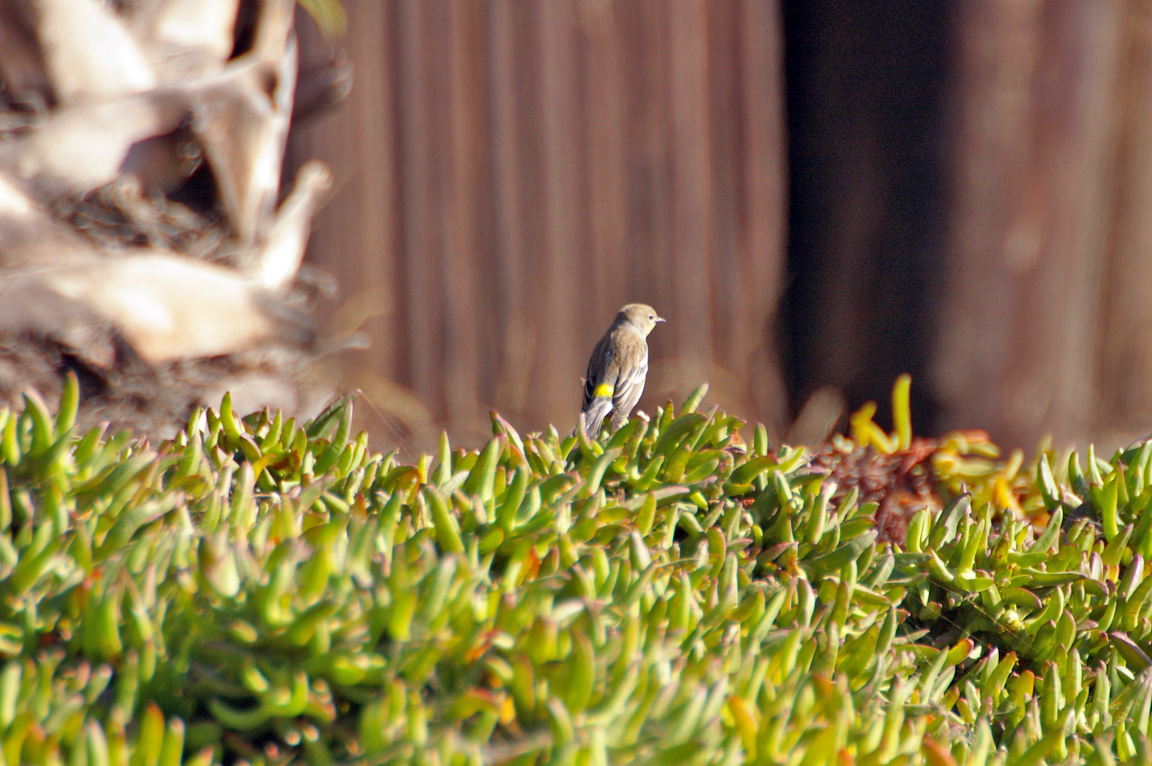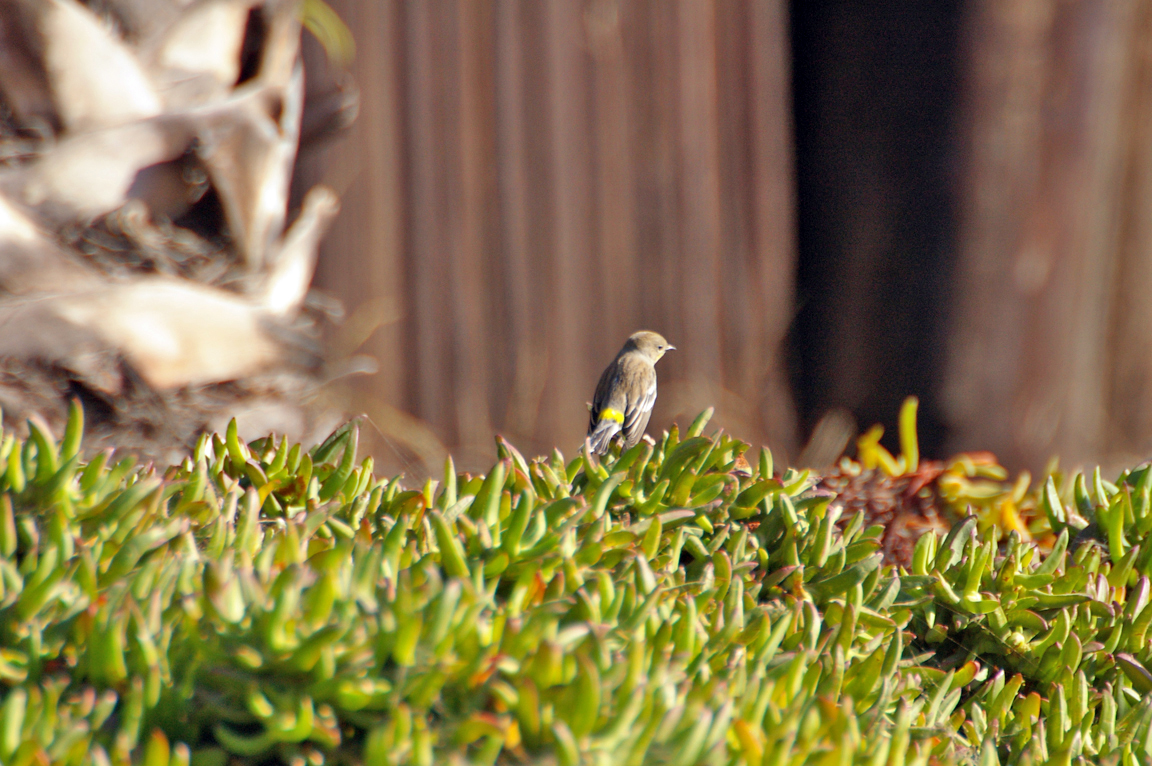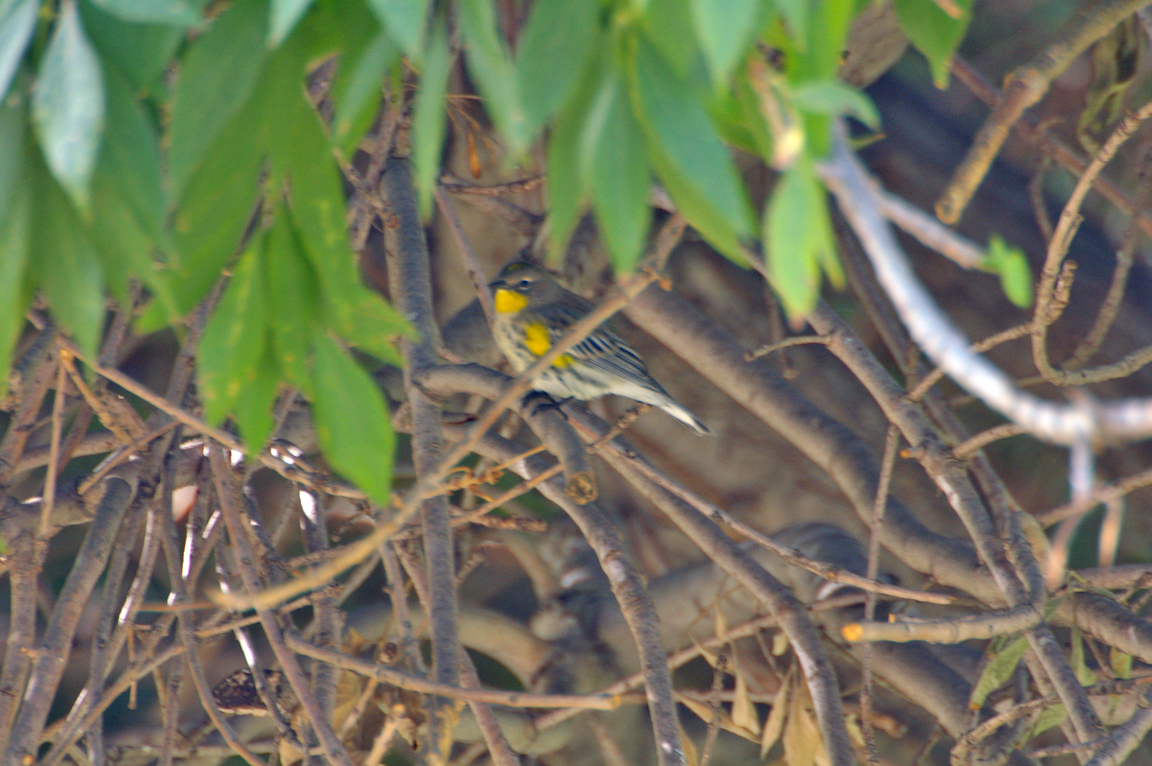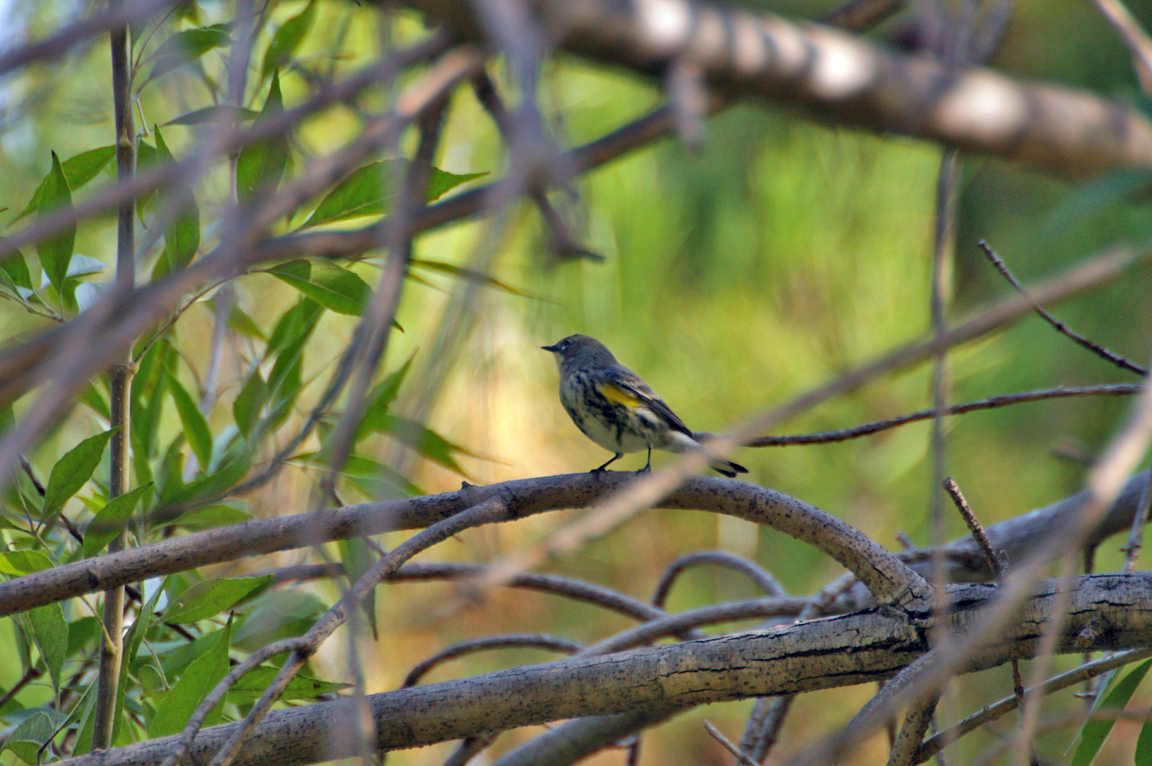|
|
|
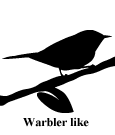 |
Yellow-rumped Warbler
|
| Dendroica coronata | |
Yellow-rumped Warblers are impressive in the sheer numbers with which they flood the continent each fall. Shrubs and trees fill with the streaky brown-and-yellow birds and their distinctive, sharp chips. Though the color palette is subdued all winter, you owe it to yourself to seek these birds out on their spring migration or on their breeding grounds. Spring molt brings a transformation, leaving them a dazzling mix of bright yellow, charcoal gray and black, and bold white.
Interesting Information
-
The Yellow-rumped Warbler is the only warbler able to digest the waxes found in bayberries and wax myrtles. Its ability to use these fruits allows it to winter farther north than other warblers, sometimes as far north as Newfoundland.
-
Male Yellow-rumped Warblers tend to forage higher in trees than females do.
-
Yellow-rumped Warblers are perhaps the most versatile foragers of all warblers. They're the warbler you're most likely to see fluttering out from a tree to catch a flying insect, and they're also quick to switch over to eating berries in fall. Other places Yellow-rumped Warblers have been spotted foraging include picking at insects on washed-up seaweed at the beach, skimming insects from the surface of rivers and the ocean, picking them out of spiderwebs, and grabbing them off piles of manure.
-
When Yellow-rumped Warblers find themselves foraging with other warbler species, they typically let Palm, Magnolia and Black-throated Green warblers do as they wish, but they assert themselves over Pine and Blackburnian warblers.
-
The oldest known Yellow-rumped Warbler of the myrtle race was 8 years 9 months old. The oldest known individual of the "Audubon's" race was 10 years old.
-
A group of warblers has many collective nouns, including a "bouquet", "confusion", "fall", and "wrench" of warblers.
Description
Adult Description
Size & Shape
Yellow-rumped Warblers are fairly large, full-bodied warblers with a large head, sturdy bill, and long, narrow tail.
-
Length Range: 14 cm (5.5 in)
-
Weight: 14 g (0.5 oz)
-
Size: Small (5 - 9 in)
Color Pattern
In summer,
both sexes are a smart gray with flashes of
white in the wings and yellow on the face,
sides, and rump. Males are very strikingly
shaded; females are duller and may show some
brown. Winter birds are paler brown, with bright
yellow rump and usually some yellow on the
sides.
Regional
Differences The
Yellow-rumped Warbler has two distinct
subspecies that used to be considered separate
species: the "myrtle" warbler of the eastern
U.S. and Canada's boreal forest, and "Audubon's"
warbler of the mountainous West. The Audubon's
has a yellow throat; in the myrtle subspecies
the throat is white. Male Audubon's warblers
have more white in the wing than the myrtle
warbler. Female Audubon's have less distinctly
marked faces, lacking the dark ear patches of
the myrtle warbler. Intermediate forms occur
where the two subspecies' breeding ranges
overlap, such as in the Canadian Rockies.
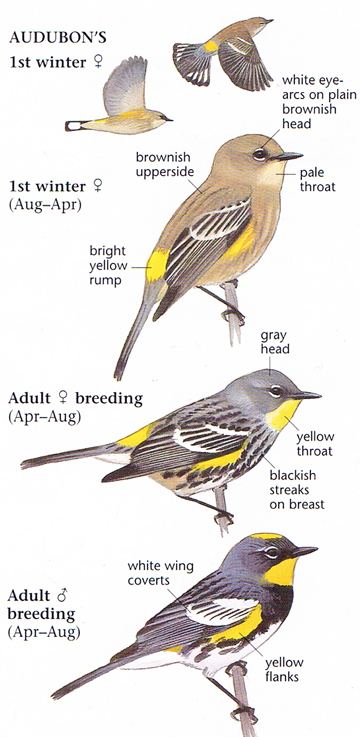
Photo taken from: The Sibley Field Guide by David Allen Sibley
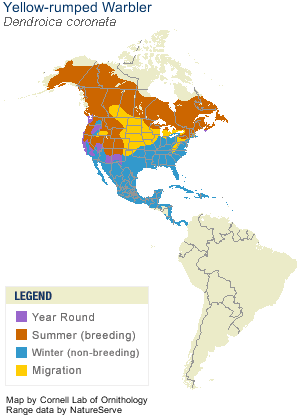
© 2003 Cornell Lab of Ornithology
|
Habitat |
|
In summer, Yellow-rumped Warblers are birds of open coniferous forests and edges, and to a lesser extent deciduous forests. In fall and winter they move to open woods and shrubby habitats, including coastal vegetation, parks, and residential areas. |
|
Behavior |
|
Yellow-rumped Warblers flit through the canopies of coniferous trees as they forage. They cling to the bark surface to look for hidden insects more than many warblers do, but they also frequently sit on exposed branches and catch passing insects like a flycatcher does. In winter, Yellow-rumped Warblers join flocks and switch to eating berries from fruiting shrubs. Sometimes the flocks are enormous groups consisting entirely of Yellow-rumped Warblers. If another bird gets too close, Yellow-rumped Warblers indicate the infraction by holding the body horizontally, fanning the tail, and raising it to form a right angle with its body. When males court females, they fluff their feathers, raise their wings and the feathers of the crown, and hop from perch to perch, chipping. They may also make display flights in which they glide back and forth or fly slowly with exaggerated wingbeats. The Yellow-rumped Warbler's flight is agile and swift, and the birds often call as they change direction. |
|
Food |
|
Yellow-rumped Warblers eat mainly insects in the summer, including caterpillars and other larvae, leaf beetles, bark beetles, weevils, ants, scale insects, aphids, grasshoppers, caddisflies, craneflies, and gnats, as well as spiders. They also eat spruce budworm, a serious forest pest, during outbreaks. On migration and in winter they eat great numbers of fruits, particularly bayberry and wax myrtle, which their digestive systems are uniquely suited among warblers to digest. The habit is one reason why Yellow-rumped Warblers winter so much farther north than other warbler species. Other commonly eaten fruits include juniper berries, poison ivy, poison oak, greenbrier, grapes, Virginia creeper, and dogwood. They eat wild seeds such as from beach grasses and goldenrod, and they may come to feeders, where they'll take sunflower seeds, raisins, peanut butter, and suet. On their wintering grounds in Mexico they've been seen sipping the sweet honeydew liquid excreted by aphids. |
Taxonomy
| Kingdom: | Animalia |
| Phylum: | Chordata |
| Subphylum: | Vertebrata |
| Class: | Aves |
| Order: | Passeriformes |
| Family: | Parulidae |
| Genus: | Dendroica |
| Species: | Dendroica coronata |
| Subspecies: | Dendroica coronata auduboni |
| Dendroica coronata coronata | |
| Dendroica coronata goldmani | |
| Dendroica coronata nigrifrons |
Similar Species |
|
|
Bird Sound |
|
Males sing a slow, soft, sweetly whistled warble or trill. The pitch is mostly even but may rise or fall slightly, speeding up as it ends. Songs last 1-3 seconds and consist of up to 21 individual notes. |
|
Eggs look like this |
|
Photo taken from: ARCTOS Collaborative Collection Management Solution |
